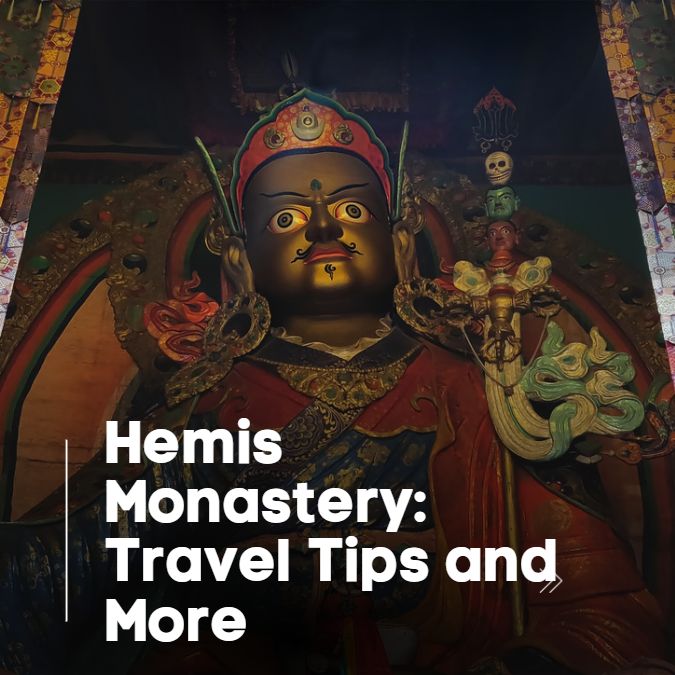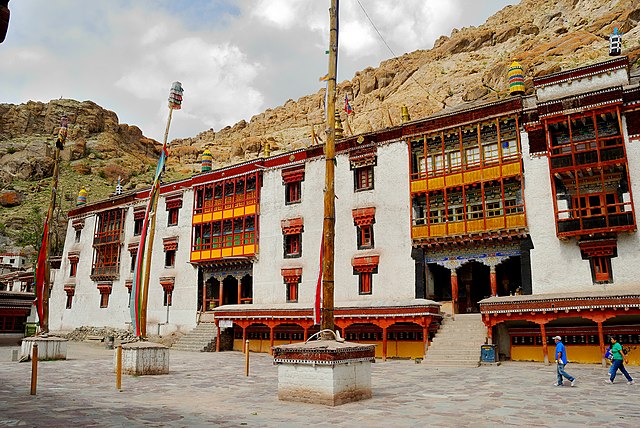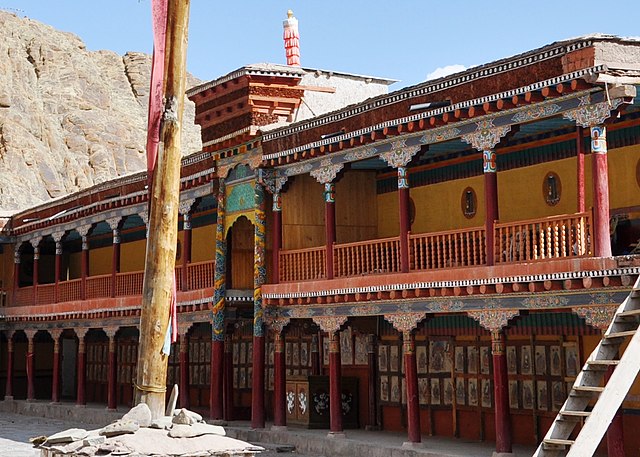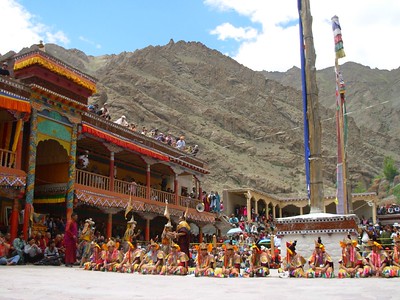Table of Contents
Nestled in the picturesque Hemis village of Leh Ladakh lies a sacred hermitage that has captured the hearts and minds of visitors for centuries. Hemis Monastery, also known as Hemis Gompa, is one of the largest and wealthiest Buddhist monasteries in the region, attracting tourists from all over the world. Founded by the Ladakhi king Sengge Namgyal in the 17th century, this monastery is dedicated to Lord Padmasambhava, also known as Guru Rinpoche. The monastery boasts several important structures such as Nyingma Lhakhang and Dukhang Barpa. The Head Lama of Hemis is highly respected among the local community. Additionally, Hemis Monastery is located near Pangong Tso, a beautiful lake that is popular among tourists.
This spiritual haven, Hemis Gompa, houses several important structures such as Dukhang Barpa, Nyingma Lhakhang, Guru Lhakhang, and a museum that displays rare artefacts and thangkas. The head lama, Rinpoche, runs the Vajrayana monastery with a group of resident monks who live within its walls. Visitors can immerse themselves in Buddhist culture by attending prayer ceremonies or simply enjoying the serene surroundings. Hemis Gompa is also known for being the birthplace of the famous yogi Tilopa.
If you’re planning a trip to Leh Ladakh or Manali, don’t miss out on visiting Hemis Gompa, a magnificent monastery situated near Pangong Tso Lake. This monastery is home to Nyingma Lhakhang, Guru Lhakhang, and Dukhang Barpa.
History of Hemis Monastery in Ladakh: Tracing its Roots and Significance
Hemis Monastery is a significant Buddhist monastery located in the picturesque region of Ladakh. The monastery has a rich history that dates back to the 11th century, making it one of the oldest monasteries in the region. It consists of several buildings, including the Nyingma Lhakhang and Guru Lhakhang, and is headed by the Head Lama. The monastery is also known for hosting the renowned Rinpoche.
Origin and Founding
Hemis Monastery, a prominent Nyingma monastery, was founded by Stagsang Raspa Nawang Gyatso in 1630 AD. However, its history dates back to the 11th century when Naropa, an Indian Buddhist scholar, visited Ladakh. During his visit, he prophesized that a great spiritual centre would be established at the site where Hemis Monastery stands today. The monastery comprises two main halls: Guru Lhakhang and Nyingma Lhakhang. Visitors can take a tour of the monastery and receive teachings from the Rinpoche.
The prophecy came true when Stagsang Raspa Nawang Gyatso founded Hemis Monastery in 1630 AD. He was a disciple of the fifth Gyalwa Gotsangpa (1189-1258), who was an important figure in both the Drukpa and Kagyu lineages of Tibetan Buddhism. Hemis Monastery is located in Leh Ladakh, a popular destination for tours. The monastery has a Guru Lhakhang and a Nyingma Lhakhang.
Significance
Hemis Monastery is a must-visit destination for any group trip exploring the rich heritage of Ladakh. It is closely associated with both the Drukpa and Kagyu lineages of Tibetan Buddhism, making it one of the most significant monasteries in the region due to its historical importance.
The monastery in Leh Ladakh has played a crucial role in preserving Tibetan Buddhism’s teachings and culture for centuries, making it an essential stop on any trip to the region. It houses several precious artefacts such as thangkas (Tibetan Buddhist paintings on cotton or silk), murals, statues, and scriptures that date back to ancient times.
Moreover, planning a trip to Hemis Monastery is a must for those seeking cultural experiences. The monastery is famous for its annual festival called Hemis Festival or Hemis Tsechu, which celebrates Guru Padmasambhava’s birth anniversary (also known as Guru Rinpoche) which introduced Buddhism to Tibet. The festival attracts thousands of tourists from around the world and is a significant event in Ladakh’s cultural calendar.
Drukpa and Kagyu Lineages
As mentioned earlier, Hemis Monastery is associated with both the Drukpa and Kagyu lineages of Tibetan Buddhism. The Drukpa lineage was founded by Tsangpa Gyare in the 12th century. It emphasizes meditation, compassion, and non-dualism.
On the other hand, the Kagyu lineage was founded by Marpa Lotsawa (1012-1097), who studied under Indian Buddhist masters such as Naropa and Maitripa. The Kagyu lineage emphasizes the direct transmission of teachings from master to student through meditation practices. If you’re interested in learning more about this lineage, consider taking a monastery tour at Thiksey Monastery.
Hemis Monastery has played an essential role in preserving both these lineages’ teachings for centuries. Many great masters such as Gyalwa Gotsangpa, Naropa, and Tilopa have visited Hemis over the years, making it a centre for spiritual learning.
Architecture of Hemis Monastery: Exploring the Unique Design Elements
The Monastery is a famous Buddhist monastery located in Ladakh, India. It is known for its unique architecture and design elements that showcase the rich cultural heritage of the region.
Assembly Hall and Gallery Showcasing Ancient Paintings and Statues
The assembly hall or Dukhang is one of the main attractions of Hemis. The hall is adorned with beautiful paintings and statues that depict various aspects of Buddhism. The walls are decorated with murals that showcase scenes from the life of Buddha and other important figures in Buddhist history. The assembly hall also houses a large statue of Lord Buddha that is made of copper and gold.
Apart from the assembly hall, there is also a gallery within Hemis Monastery that showcases ancient paintings and statues. The gallery has an impressive collection of thangkas (scroll paintings) that date back to the 11th century. These thangkas depict various deities, mandalas, and other important symbols in Buddhism.
Courtyard Featuring Traditional Items and Artifacts
The courtyard within Hemis is another interesting feature that visitors should not miss. The courtyard features traditional items such as prayer wheels, prayer flags, and mani stones. Prayer wheels are cylindrical devices that contain prayers written on paper or cloth. When spun clockwise, these wheels are believed to release positive energy into the environment.
Prayer flags are colourful flags with prayers printed on them. These flags are hung outside homes or temples to spread positivity and good fortune. Mani stones are large rocks with prayers carved onto them. Visitors can spin prayer wheels, offer prayers at mani stones, or simply enjoy the serene atmosphere within the courtyard. If you’re interested in a monastery tour, make sure to visit Thiksey Monastery for an immersive experience.
Main Door Adorned With a Statue of Lord Buddha
The main door of Hemis Monastery is another unique feature that visitors should take note of. The door is adorned with a beautiful statue of Lord Buddha that is made of copper and gold. The statue depicts Buddha in a meditative pose, with his eyes closed and hands resting on his lap.
The main door also features intricate carvings and designs that showcase the rich cultural heritage of the region. Visitors can admire the beauty of the door while entering or leaving Hemis Monastery.
Hemis Monastery Timings and Entry Fee: Know Before You Go
If you are planning to visit the Hemis, it is essential to know about its timings and entry fee. The Monastery is a famous Buddhist monastery located in Ladakh, India. It is one of the largest and wealthiest monasteries in Ladakh, with a rich cultural heritage.
Timings of Hemis Monastery
It is open for visitors from 8:00 AM to 1:00 PM and 2:00 PM to 6:00 PM every day. The best time to visit the monastery is during these hours as you can explore the monastery at your own pace without any rush.
However, if you want to witness the morning prayers held at the monastery, you should plan your visit accordingly. The morning prayers start at around 6:00 AM and last for an hour or so.
Entry Fee for Hemis Monastery
The entry fee for Indian nationals visiting is INR 50 per person. On the other hand, foreign nationals have to pay INR 100 per person as an entry fee.
It’s worth noting that there are no additional charges for photography within the premises of Hemis. However, if you wish to take pictures inside the temple or museum area, then an additional fee of INR 100 is charged for still cameras and INR 400 for video cameras.
Rules and Regulations
There are certain rules and regulations that visitors must follow when visiting Monastery:
- Visitors are required to remove their shoes before entering the monastery.
- Dress modestly while visiting the temple.
- Do not touch any artefacts or statues inside the temple.
- Smoking or consuming alcohol within the premises is strictly prohibited.
- Do not disturb monks during prayer sessions.
- Do not litter around on-premises.
- Keep noise levels low.
Best Time to Visit Hemis Monastery
The best time to visit Hemis is during the annual Hemis Festival, which takes place in June or July. The festival is celebrated in honour of Guru Padmasambhava’s birth anniversary and is a grand celebration that attracts visitors from all over the world.
During the festival, you can witness colourful masked dances, music performances, and other cultural events. It’s an excellent opportunity to experience Ladakh’s unique culture and traditions.
Apart from the festival season, the winter months are also a good time to visit Hemis. The monastery looks stunning covered in snow, and you can enjoy peaceful surroundings with fewer crowds.
Accommodation and Food Options at Hemis Monastery: Where to Stay and What to Eat
Accommodation Options at Monastery
Hemis, located in the Ladakh region of India, is a popular tourist destination for those seeking spiritual enlightenment and cultural experiences. The monastery offers various accommodation options for visitors who wish to stay overnight.
One of the most popular options is staying in one of the guesthouses within the monastery complex. These guesthouses offer simple yet comfortable rooms with basic amenities such as beds, blankets, and pillows. The rooms are clean and well-maintained, providing a peaceful atmosphere for visitors to relax and unwind after a day of exploring.
For those who prefer a more adventurous experience, camping sites are also available near the monastery. Visitors can bring their own tents or rent them from local vendors. Camping provides an opportunity to immerse oneself in nature while being close to the monastery.
Food Options at Hemis Monastery
The dining hall at Hemis Monastery serves vegetarian meals that are included in the cost of accommodation. The meals are simple but delicious, cooked using traditional methods with fresh ingredients sourced from local farms.
Visitors can enjoy breakfast, lunch, and dinner at the dining hall along with other guests staying at the guesthouses or camping sites. The community-style seating arrangement encourages socializing and interaction among visitors from different parts of the world.
Nearby Restaurants and Cafes
While there are limited food options available within the monastery complex itself, there are a few restaurants and cafes located in nearby villages such as Hemis Village. These establishments serve traditional Ladakhi cuisine along with other Indian dishes.
One such restaurant is “The Tibetan Kitchen” which is located about 10 km away from Hemis. They serve authentic Tibetan cuisine along with other Asian dishes like momos (dumplings), Thukpa (noodle soup), and fried rice.
Hemis Monastery Festival: Dates and Highlights of the Annual Celebration
Hemis Monastery is a famous Buddhist monastery located in the Hemis National Park, Ladakh, India. The monastery is known for its rich history and culture, especially during the annual Hemis Monastery Festival. This festival is a significant event in Ladakh and attracts thousands of tourists from all over the world.
When is the Hemis Monastery Festival?
The Hemis Festival is an annual celebration held on the 10th day of the fifth month of the Tibetan calendar. This usually falls in June or July, depending on when the lunar cycle starts. The festival lasts for two days, with the second day being the main highlight.
What are some highlights of the festival?
One of the main attractions of the Hemis Festival is the mask dances performed by monks dressed in vibrant costumes. These dances are called ‘Cham’ and are performed to celebrate good over evil. The Cham dance performances depict various stories from Buddhist mythology and are accompanied by traditional music played on instruments such as cymbals, drums, and horns.
Apart from Cham dances, there are also other cultural events that take place during this festival. These include exhibitions showcasing thangkas (Buddhist paintings), handicrafts made by local artisans, and traditional food stalls selling delicious Ladakhi cuisine.
Another highlight of this festival is a sacred ceremony where a giant thangka (religious painting) depicting Padmasambhava (a revered Buddhist master) is unveiled to devotees once every twelve years. This ceremony draws large crowds from all over Ladakh who come to witness this rare event.
Celebrating During a Monkey Year
In 2016, which was a year according to the Chinese zodiac sign that was associated with monkeys – it was celebrated with great enthusiasm at Hemis. It was believed that when the Monkey Year arrives, it is a time to bring positive change and good fortune. The Hemis Festival celebrated this year was even more vibrant and colourful than usual.
Best Time to Visit Hemis Monastery: When to Experience its Serenity and Charm
Summer Months of June to September
The best time to visit the Hemis is during the summer months of June to September. During this time, the weather is pleasant, and you can enjoy a comfortable trip without worrying about harsh weather conditions. The temperature ranges between 10°C to 25°C, making it perfect for sightseeing and outdoor activities.
Witness the Hemis Festival in July and August
If you want to experience the vibrant culture of Ladakh, then plan your visit during July or August when the famous Hemis Festival takes place. This festival celebrates the birth anniversary of Guru Padmasambhava, who founded Tantric Buddhism in Tibet. During this time, you can witness colourful mask dances performed by monks wearing traditional costumes.
Winter Months from December to February
For snow lovers, the winter months from December to February are the best time to visit Hemis. The entire region gets covered with a thick blanket of snow, making it look like a winter wonderland. You can indulge in various activities like skiing, ice skating, and trekking on frozen rivers.
Off-Season Months of April, May, and October
If you want to avoid crowds and get discounted rates on accommodation and travel expenses, then plan your visit during the off-season months of April, May, and October. During these months, you can experience peaceful surroundings and enjoy a hassle-free trip without worrying about long queues at popular tourist spots.
Closure During the Winter Months of November to March
It’s important to note that it remains closed during winter months from November to March due to heavy snowfall. Therefore it’s recommended not to plan your visit during these months as it won’t be possible even if you manage to reach there.
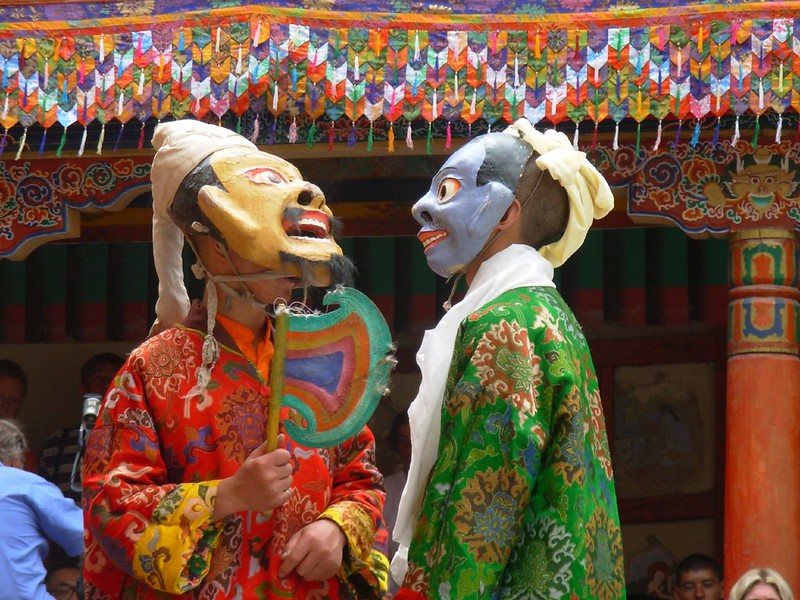
Hemis Monastery Travel Tips: Essential Information for a Hassle-Free Visit
Hemis Monastery Travel Guide
The Monastery is one of the most significant Buddhist monasteries in India. It is located in Ladakh, which is a high-altitude desert in the northernmost part of India. The monastery is famous for its rich history, vibrant culture, and stunning architecture. If you’re planning to visit this beautiful destination, here are some essential tips that will help make your trip hassle-free.
Essential Information for Visiting Hemis Monastery
Best Time to Visit
The best time to visit Hemis is between June and September when the weather is pleasant, and the roads leading to it are open. During this period, you can also witness the famous Hemis Festival that takes place in July.
Getting There
You can reach Hemis by road or air. The nearest airport is Leh Airport, which is around 50 km away from the monastery. You can also take a taxi or bus from Leh to reach there.
Entry Fee and Timings
There is an entry fee of INR 100 per person to enter the monastery premises. The timings are from 8:00 am to 1:00 pm and 2:00 pm to 6:00 pm.
Dress Code
Since it’s a religious place, visitors are required to dress modestly. Both men and women should cover their shoulders and knees while entering the temple.
Accommodation
There are several guest houses and hotels near Hemis where you can stay during your visit. These accommodations offer basic amenities like hot water, electricity, and food.
Hemis Trip: What You Need To Know Before You Go
Altitude Sickness
Hemis is situated at an altitude of around 12,000 feet above sea level. Therefore, it’s essential to acclimatize yourself before visiting the monastery. You can do this by spending a few days in Leh or other nearby places.
Local Culture
Ladakh has a unique culture that is different from the rest of India. Respect the local customs and traditions while visiting Hemis. Dress modestly, ask for permission before taking photographs, and be mindful of your actions.
Weather Conditions
The weather in Ladakh is unpredictable, so it’s advisable to carry warm clothes and rain gear with you during your visit. The temperature can drop below freezing point at night, even during summer.
Trekking
If you’re an adventure enthusiast, you can go on a trek to Hemis National Park which surrounds the monastery. The park is home to several rare species of animals like snow leopards, Tibetan wolves, and Eurasian lynx.
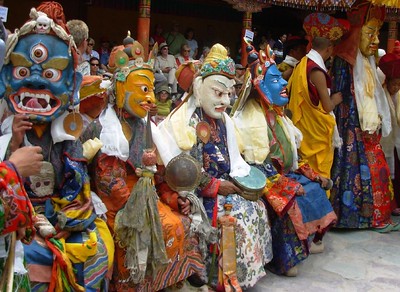
How to Reach Hemis Monastery: Getting There Made Easy
Road Trip to Hemis Monastery
Hemis Monastery is one of the most popular tourist destinations in India, located in the Ladakh region of Jammu and Kashmir. The monastery is easily accessible by road and can be reached via the Leh-Manali Highway.
The road trip to Hemis Monastery is a scenic drive that offers breathtaking views of the Himalayan mountains, making it an unforgettable experience. The route passes through some of the highest motorable roads in the world, which makes it an adventure worth experiencing.
Taking a Taxi to Hemis Monastery
Visitors can take a taxi from Leh to reach Hemis Monastery. Taxis are easily available in Leh, and visitors can negotiate with drivers for a reasonable price. A taxi ride takes approximately two hours from Leh to reach Hemis Monastery.
Taking a taxi is one of the best options for those who prefer comfort and convenience while travelling. Visitors can stop at several points along the way to enjoy the stunning views and take pictures.
Bus Ride to Hemis Monastery
Another option for reaching Hemis Monastery is by taking a bus from Leh. Local buses operate regularly between Leh and Hemis, making it easy for budget travellers or those who prefer public transportation.
The bus ride takes around three hours, but it’s an affordable option for those who want to save money on transportation costs. However, visitors should note that buses may not always be punctual due to weather conditions or other unforeseen circumstances.
Where is Hemis Monastery Located?
Hemis Monastery is located in the village of Hemis in Ladakh, Jammu & Kashmir state of India. It’s situated approximately 35 kilometres southeast of Leh City on the west bank of the Indus River.
The monastery dates back over 400 years ago and has a rich history that attracts visitors from all over the world. It’s known for its unique architecture, beautiful paintings, and sculptures that depict the life of Lord Buddha.
Other Important Tips for Visiting Hemis Monastery: Dos and Don’ts to Keep in Mind
Dress Appropriately for the Visit
Hemis Monastery is a sacred place and visitors are expected to dress appropriately. It’s best to wear comfortable, conservative clothing that covers your shoulders and knees. Avoid wearing shorts, tank tops, or revealing clothes as they are not allowed inside the monastery. Visitors should also remove their shoes before entering any of the temple rooms.
Keep Your Phone on Silent Mode
It’s important to keep your phone on silent mode while visiting Hemis Monastery. The ringing sound can be disruptive and disrespectful to others who are praying or meditating. Taking pictures inside the monastery is prohibited unless you have prior permission from the authorities.
Respect the Religious Customs and Traditions of the Monastery
Hemis Monastery is a Buddhist monastery with its own unique customs and traditions. Visitors are expected to respect these practices when visiting the monastery. For example, it’s customary to walk clockwise around any religious structures or artefacts within the monastery premises.
Do Not Touch or Disturb Any Artifacts or Objects Inside the Monastery
Visitors should not touch or disturb any artefacts or objects inside Hemis Monastery. These items hold significant religious value for Buddhists, and it’s essential that they remain undisturbed so that they can continue to serve their intended purpose.
Follow the Instructions of the Monastery Staff
The staff at Hemis Monastery is knowledgeable about its customs and traditions, making them an excellent resource for visitors who want to learn more about Buddhism. If you have any questions about what you can do during your visit, don’t hesitate to ask them for guidance.
Conclusion: Discovering the Tranquility and Rich Culture of Hemis Monastery
Congratulations, you are now equipped with all the essential information to plan your visit to Hemis Monastery! This ancient monastery in Ladakh is not just a spiritual centre but also a cultural treasure trove. From its rich history to unique architecture, from delicious food options to vibrant festivals, Hemis Monastery has something for everyone.
Make sure you plan your visit during the summer months when the weather is pleasant and the monastery is open for visitors. Don’t forget to check out the colourful Hemis Festival that takes place every year in June/July.
Once you reach there, take some time to explore the intricate design elements of this beautiful monastery. You can also stay at one of the guesthouses nearby and savour some local delicacies.
Hemis Monastery promises an experience like no other – one that will leave you feeling rejuvenated and inspired. So why wait? Start planning your trip today!
FAQs
1. Is there an entry fee for visiting Hemis Monastery?
Yes, there is an entry fee of INR 100 for Indian nationals and INR 300 for foreign nationals.
2. What are the timings of Hemis Monastery?
The monastery is open from 8 am to 1 pm and from 2 pm to 6 pm every day except on Sundays.
3. Can I attend a prayer ceremony at Hemis Monastery?
Yes, visitors are welcome to attend prayer ceremonies at specific times during the day. However, it’s important to maintain silence and respect the monks’ privacy.
4. How do I reach Hemis Monastery?
You can hire a taxi or take a bus from Leh City, which is approximately 40 km away from Hemis Monastery.
5. Are there any accommodation options near Hemis Monastery?
Yes, there are several guesthouses and homestays near the monastery that offer comfortable accommodation at reasonable rates.
If you are planning to stay at an offbeat location near Leh which is filled with Nature with Snow clad mountain views, jungle and River views, please visit the best location camp in leh ladakh or call us at 9818824450 for more info.

